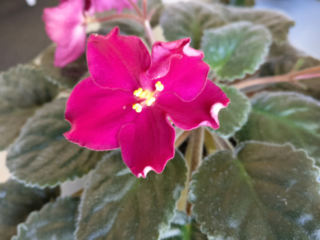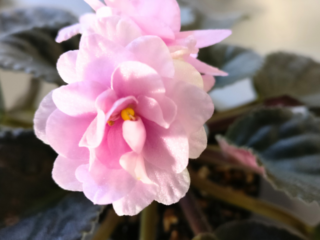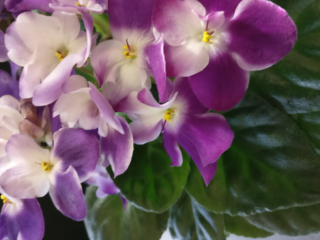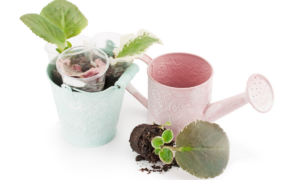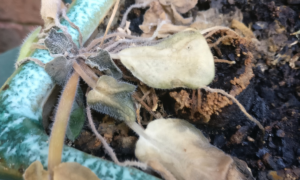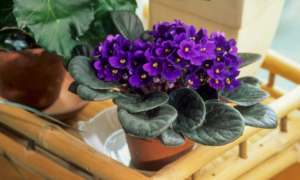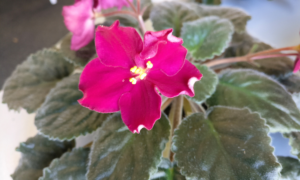As winter approaches, you might be wondering how to care for African Violets during the colder months. There are a few specific things you can do in order to keep your violets healthy and thriving through the winter season. To ensure proper care of your African Violets this winter, we’ll discuss water management, temperature regulation, fertilization needs and pest/disease prevention strategies so they remain beautiful all year round! This way, you’ll help them survive any cold weather that comes their way.
Table Of Contents:
- Temperature
- Watering
- Fertilizer
- Pests & Diseases
- FAQs in Relation to How to Care for African Violets in Winter
- Conclusion
Temperature
It’s is important to understand the ideal temperature for African violets in order to ensure they thrive.
Ideal Temperature:
The ideal temperature range for African violets is between 65-75°F (18-24°C). During winter months, temperatures should not drop below 60°F (15°C) as this can cause damage or even death of the plant. It’s best to keep your African violet away from cold drafts or windowsills that get too chilly during wintertime.
Maintaining Temperature:
If you have an indoor thermometer, use it to monitor the room temperature where your African violet is located. If needed, you can adjust the thermostat accordingly so that your plant stays within its preferred temperature range. Additionally, if possible move your plant away from any air vents or other sources of cool air flow which could affect its health over time.
Humidity:
In addition to maintaining proper temperatures, humidity levels should also be taken into consideration when caring for African violets. The optimal humidity level should be around 50%, but anything between 40-60% is acceptable as well. To increase the humidity, misting regularly with water or placing a humidifier near the plant can help; however, it is important not to overwater as this could lead to root rot and eventual death of the plant.
.png)
When temperatures drop in winter, it’s important to ensure your African Violets are kept warm enough to thrive. Now let’s look at how best to water them during the cold season.
Watering
Watering African violets is an important part of their care, especially in winter when you’ll be watering less often than in other seasons.
In winter when temperatures are cooler, African violets may need less frequent watering than during warmer months because they grow more slowly due to lower light levels and shorter days. As a general rule of thumb, wait until about two thirds of the soil has dried out before adding more moisture – usually every 10 days should be sufficient depending on conditions such as air humidity and temperature in your home or greenhouse environment where they’re kept.
Instead of sticking your finger into the pot, it is best practice to use a wooden skewer or chopstick. Insert the skewer into several places around each pot and then pull it out after five seconds. If there is still some dampness present, hold off from watering until most of it has gone away; otherwise overwatering could occur, leading to potentially fatal root rot issues later down the line.
Proper watering is essential for healthy African violets. However, fertilizer also plays an important role in keeping your plants healthy during the winter months.
Fertilizer
Fertilizing African violets in winter is an important part of keeping them healthy and happy. During the winter months, when growth slows down, it’s best to use a balanced fertilizer with equal parts nitrogen, phosphorus and potassium. This will provide your plants with the nutrients they need without over-stimulating their growth.
Remember, you won’t be fertilizing as often in winter as in other months – we’re gonna slow things way down during winter!
It’s also important to fertilize at quarter strength during this time of year as too much fertilizer can burn or damage the leaves. You should only fertilize once every few weeks for best results.
Be sure not to overfertilize as this can lead to leaf burn or even death of your plants if done too often or in excess amounts. It is always better to err on the side of caution when it comes to feeding your African violets; less is more. Especially in winter! We recommend once a month at quarter strength as a rule of thumb.
Now let’s look at pests and diseases that can affect African violets in winter.
Pests & Diseases
Pests & Diseases
African violets are susceptible to a variety of pests and diseases, especially during the winter months. It is important to be aware of these potential issues so that you can take steps to prevent them or treat them if they do occur.
One common pest that affects African violets in winter is mealybugs. These small insects feed on the sap from the leaves and stems of plants, causing damage and stunting growth. Mealybugs can be identified by their white, cottony appearance and tend to congregate around leaf axils (where leaves meet stems). To get rid of mealybugs, use an insecticidal soap or neem oil spray every 7-10 days until all signs of infestation have disappeared.
.png)
Another common pest is aphids which also feed on plant sap but appear as tiny green or black dots on the undersides of leaves. Aphids reproduce quickly so it’s important to act fast when dealing with an infestation – use a pesticide such as pyrethrin or spinosad for best results.
Fungal diseases are another issue faced by African violets in wintertime due to high humidity levels indoors combined with cooler temperatures outside. The most common fungal disease affecting African violets is powdery mildew which appears as white spots on foliage caused by spores produced by fungi living in moist soil conditions near infected plants. To prevent powdery mildew from occurring, ensure your African violet has adequate air circulation around its pot and keep humidity levels low by using a dehumidifier if necessary. If your plant does become infected then try treating it with fungicides such as potassium bicarbonate or sulfur-based products applied directly onto affected areas once every 7-10 days until symptoms disappear completely.
Finally, root rot can affect African violets during cold weather months due to overwatering combined with poor drainage leading to soggy soil conditions where fungus thrives. This will cause roots to turn brown and mushy before eventually killing off entire plants if left untreated for too long. To avoid root rot, it is important to water only when necessary (when the top inch or two inches of soil feels dry) and always allow excess water to drain away freely after each watering session. Doing so will help keep moisture levels balanced without risking any fungal infections developing further down into the potting mix over time.
FAQs in Relation to How to Care for African Violets in Winter
How do you keep African violets alive in the winter?
To keep African violets alive during the winter months, it is important to provide them with bright indirect light and maintain consistent temperatures between 65-75°F (18-24°C). Additionally, water African violets sparingly by keeping the soil moist but definitely not soggy. Once every 10 days is fine. If you live in an area with dry air, use a humidity tray or mist your plants occasionally to increase moisture levels. Lastly, fertilize your African violets every few weeks using a balanced liquid fertilizer diluted to quarter strength for best results. With these tips and regular care, you can keep your African violets thriving all year round!
What temperature is too cold for African violets?
African violets prefer temperatures between 65-75°F (18-24°C). Temperatures below 55°F (13°C) can cause damage to the leaves and flowers, and prolonged exposure to cold temperatures can lead to death of the plant. It is best to keep African violets away from drafty windows or doors in winter months, as even a slight chill can be damaging.
How often do you water an African violet?
African violets need to be watered regularly and evenly. Water your African violet when the top inch or two of soil feels dry to the touch; this should be done every 7-10 days. But less often in winter. When you do water, make sure that you don’t overwater – pour until just enough comes out of the drainage holes in the bottom of your pot.
Should you feed African violets in winter?
Yes, African violets should be fed in winter. During this season, the plants may not be actively growing but they still need nutrients to stay healthy and strong. A balanced fertilizer with an N-P-K ratio of 20-20-20 can be used every few weeks at a reduced rate compared to other seasons. (We recommend quarter strength). Make sure to water the soil before applying fertilizer and avoid getting any on the leaves as it can cause damage. With proper care, your African violets will thrive throughout the year!
.png)
Conclusion
Keeping the temperature between 65-75°F, watering when the soil is dry to the touch and fertilizing once every few weeks are all important aspects of care for african violets in winter. Additionally, being aware of pests and diseases that can affect your plants will help you keep them healthy during this season.
Winter can be a challenging time for African violets, but with the right care and attention they will thrive. Learning how to protect your plants from cold temperatures and provide them with the light, humidity, temperature range, water levels and fertilizer that are ideal for their growth is key. With some simple steps you can ensure your African Violets stay healthy throughout winter so they’ll come back even stronger in spring!

